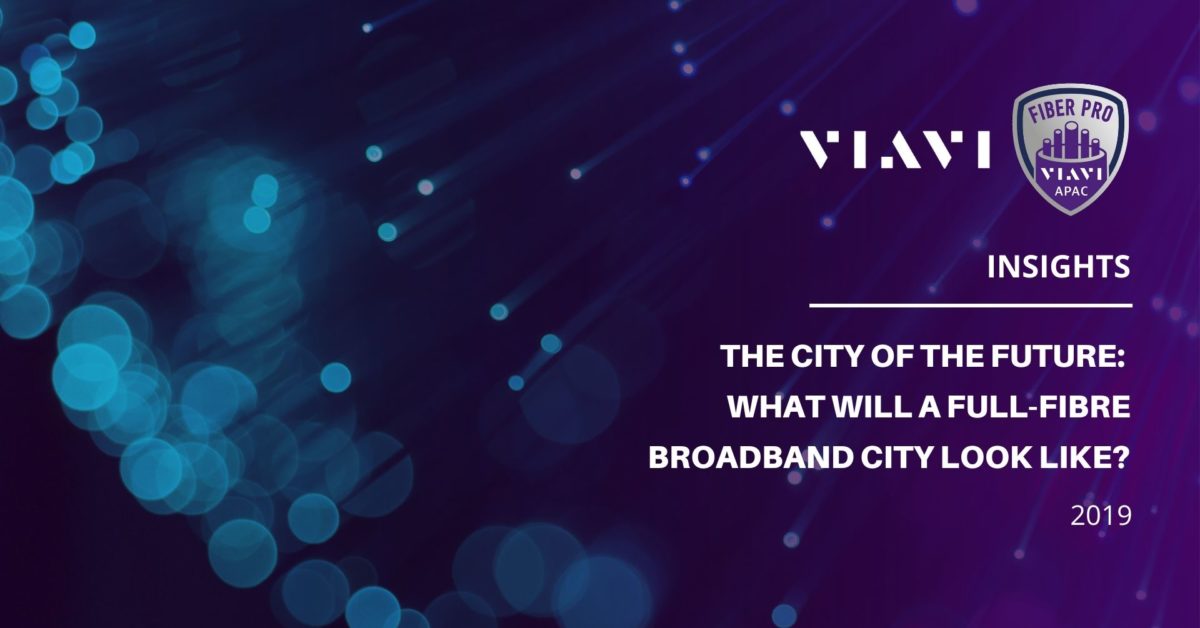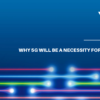The city of the future: What will a full-fiber broadband city look like?

Full-fiber broadband is already on the horizon. In fact, the APAC region are ahead of the curve as Singapore reaches first place with 93% fiber coverage across the island. The rest of the world is following along with substantial investments into similar infrastructure across multiple countries. For example, the UK recently approved a £5 billion investment into fiber-full broadband within the hardest to reach areas in the country.
Full fiber broadband is the newest and fastest of the three types of broadband currently available.
ADSL, short for asymmetric digital subscriber line, was the first release of broadband with copper wiring connecting to a street cabinet or junction box before connecting to a premise or household. FTTC (Fiber to the cabinet) is the second type of broadband service connecting homes and businesses. This type of broadband uses a mix of copper and fiber wherein the fiber connects the exchange to the cabinet and copper wiring connects the cabinet to the premise. The latest and fastest broadband is FTTH (fiber to the house). Made up of either plastic or glass, an FTTH connection uses pure fiber to transmit data via pulses of light. A FTTH line omits the need for any copper and a midway cabinet. Rather, it uses fiber cables with a direct connection from the exchange to the premise or home. Currently, FTTH is available on an individual basis for homes, businesses and even developers of commercial and residential properties.
Source: https://www.cityfiber.com/wp-content/uploads/2016/03/Pre-comp-1-2.gif
Fiber Optics in Singapore: What will it look like?
While FTTH is available as an either/or option, it is slowly becoming more prevalent and fiber optics in Singapore isn’t far behind in the race. StarHub, one of the four major telcos in Singapore, is going full-fiber by mid-2020. Their vision is to end cable services entirely by replacing it with fiber and this is only a small step in the bigger plan to build a gigabit-city.
A fiber broadband nation will no doubt be transformative in nature. With more individuals utilizing data-heavy products, services and infrastructure, a fiber-city is the doorway to the networked evolution of how we function. A fiber broadband city will guarantee transformative speeds and fewer (or no) dropouts. Fiber optic cables are also reliable and future-proof, powering a nation for decades to come. In fact, an all-fiber city will allow for current technology-driven products to enter the commercial market at scale. The advantages exist at an individual level, as well. Be online, all the time, with smartphones, tablets, VR headsets and even have your home security locked into a broadband network that won’t fail. Turbocharging a nation with full-fiber capacity also means creating a plethora of infrastructure-related jobs, improving commercial productivity and making remote working easier than ever.
It would be naive to assume that a fully-fledged fiber city would be a Utopian reality without any drawbacks. Although a fiber-only city is the future, it doesn’t come without challenges. The entire upheaval from a mostly ADSL and FTTC to an FTTH/FTTP-only service is an expensive endeavor. It would require an overhaul in the cables that run across an entire nation. The implementation period is thus longer as Internet service providers (ISPs) would have to dig up buried cable wiring and replace with glass or plastic-encased fiber optic cabling. Additionally, fiber optic cables require more care at installation than copper wires. Glass-based fiber optic cables are more fragile than its copper counterpart. Additionally, glass cabling is prone to be affected by various chemicals such as hydrogen gas (a problem present in underwater cables). As glass fiber cables are difficult to splice, installation is also a precarious activity as they can be easily cut or damaged during the construction process. Lastly, as data is transmitted through pulses of light, extra optical amplifiers need to be added across the connection to ensure minimum attenuation, a problem that didn’t exist with copper cables.
Despite the challenges, taking advantage of the fiber optic network is dependent on a business’ ability to command the network. VIAVI’s umbrella of interactive tools, testing capabilities and solutions offer businesses the opportunity to thrive no matter the industry. Technology is the enabler for a digitally-fueled economy. As such, whether you’re looking to master location-based demand planning, accommodate surge demands of mobile connections, 3D sensing through mobile devices, AR, VR or even offer seamless video streaming capacities, brave the future effortlessly with end to end solutions that’ll get you on top and keep you there.





